
The California Air Resources Board pitted a standard diesel-electric locomotive consist against zero-emissions alternatives – including battery-electric models from Wabtec and ProgressRail as well as Canadian Pacific Kansas City’s hydrogen fuel cell locomotive – in a hypothetical test run from the Port of Los Angeles to Barstow, Calif.
The analysis concludes that the current zero-emissions locomotives could handle a 130-car double-stack train on the 174-mile run, which includes the 2.2% climb up Cajon Pass.
CARB, as the air resources board is known, on Jan. 1 imposed an in-use locomotive rule that requires switching, industrial, and passenger locomotives to be zero-emissions by 2030 and freight line-haul locomotives to be emissions-free by 2035.
The controversial rule, which is tougher than federal regulations, must be approved by the U.S. Environmental Protection Agency. Railroads have challenged the rule in federal court and have lobbied against it, including during a House Investigations & Oversight subcommittee hearing on Thursday.
CARB’s locomotive analysis – released last month and conducted all on paper, rather than on rails – evaluated the performance of a typical diesel consist with 4,400-horsepower locomotives, Wabtec’s FLXdrive heavy-haul battery electric, ProgressRail’s SD70J-BB battery electric, and CPKC’s hydrogen fuel cell locomotive accompanied by a tender that would carry extra hydrogen fuel.
The report calculated the power requirements to handle the stack train between Los Angeles and Barstow, including the 3,760-foot elevation gain from the port to Cajon Summit. The analysis assumed that each of the 130 stack cars carry containers weighing 19 tons each. BNSF Railway and Union Pacific operate over the pass today.
The hypothetical train would require one of the following consists:
- Seven 4,400-horsepower diesel electrics
- Six FLXdrive battery electrics
- Four SD70J-BB battery electrics
- Six CPKC hydrogen fuel cell units
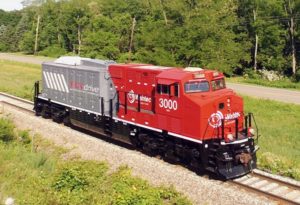
In what appears to be an afterthought, the analysis says the use of overhead catenary power between Anaheim and the top of Cajon Pass would reduce the number of locomotives required. “An operator would only need two [overhead catenary] compatible locomotives and two battery-electric locomotives to complete the trip,” CARB concludes. “This is assuming that the [catenary] compatible locomotives can produce at least 6.4 megawatts of traction power, such as the Siemens Vectron, a European freight locomotive.”
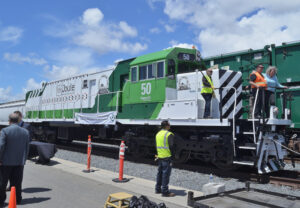
“While the Regulation does not require the purchase of new zero-emission locomotives, it is worth noting that such locomotives are available for purchase today, and could be used now in trains running between the ports of Long Beach and Los Angeles and San Bernardino or Barstow,” Abbs said. “These zero-emission locomotives have sufficient power, range, and traction to entirely replace the diesel locomotives even along that very steep route — a route that runs through some of the most heavily polluted areas in California.”
He also noted that overhead catenary, which is widely used around the world for freight operations, is more than 100 years old and is a proven technology.
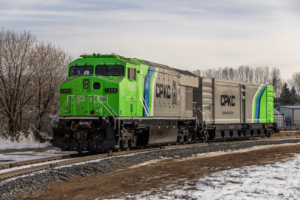
There are no proven zero-emissions locomotives that are commercially available for use in North American main line freight operations, Dick says. Even the use of overhead catenary would require the development of a high-traction, high-horsepower locomotive that could handle heavy North American freight trains, he says.
“Each zero-emission technology has unique technical, safety, and implementation challenges that must be addressed before widespread deployment is possible,” he told the House panel, noting that the CARB regulation does not allow railroads enough time to develop and transition to viable zero-emissions locomotives.
“There are numerous historical examples of railway technologies that appeared to be good ideas on paper or in the lab, but failed when rushed to market without proper testing to expose them to the long-term realities of North American heavy haul freight mainline operations,” Dick told the panel.
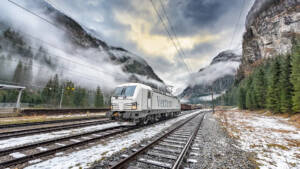
“While the spirit behind CARB’s regulation is consistent with the rail industry’s environmental commitment, the regulation itself is unworkable and infeasible,” Jefferies told the panel.
The CARB rule, which also would phase out the use of older locomotives, would ultimately prevent 75% of the North American locomotive fleet from operating in the state, Jefferies said. Even if railroads were able to develop zero-emissions locomotives for use in California, that would require engine changes just outside the state and create interoperability headaches for freight railroads.
Baker said it would be impossible for California short lines to afford compliance with the CARB rule – and that it likely would put some short lines out of business, which in turn would shift rail freight to the highway.
“These effects will be felt in the form of higher costs for shippers and consumers and will be witnessed in the form of more trucks on our roads, greater congestion on our highways, more particulate matter in our environment — and, ironically, more greenhouse gas emissions in California and elsewhere,” Baker told the panel.







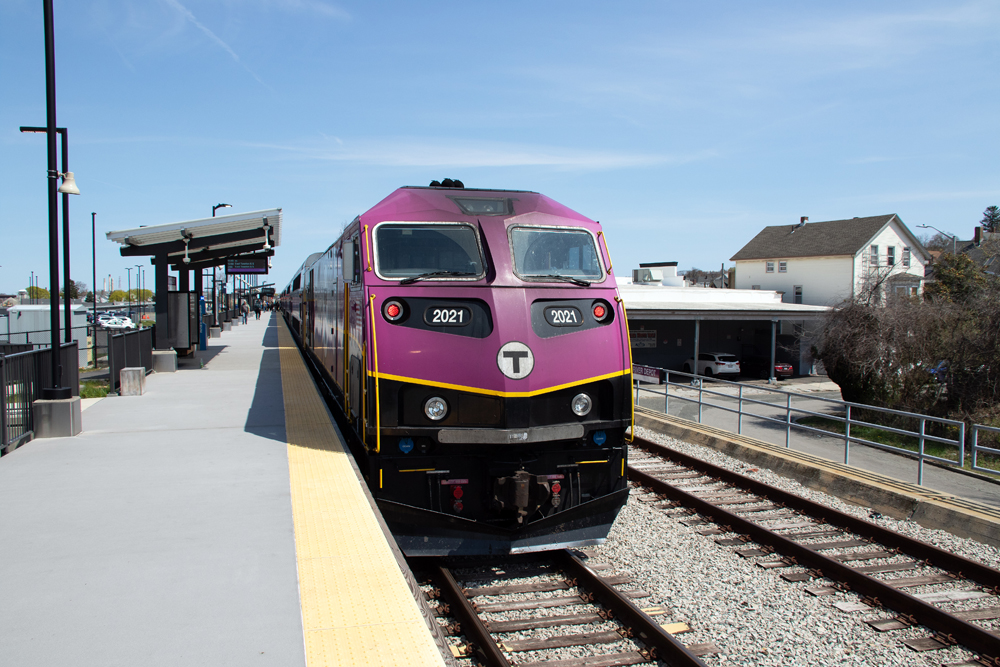
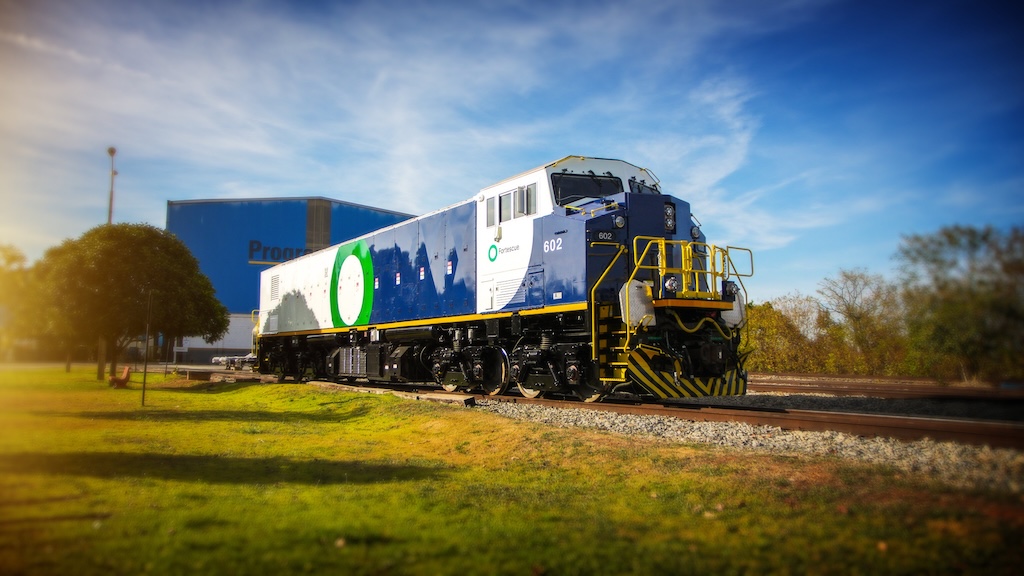
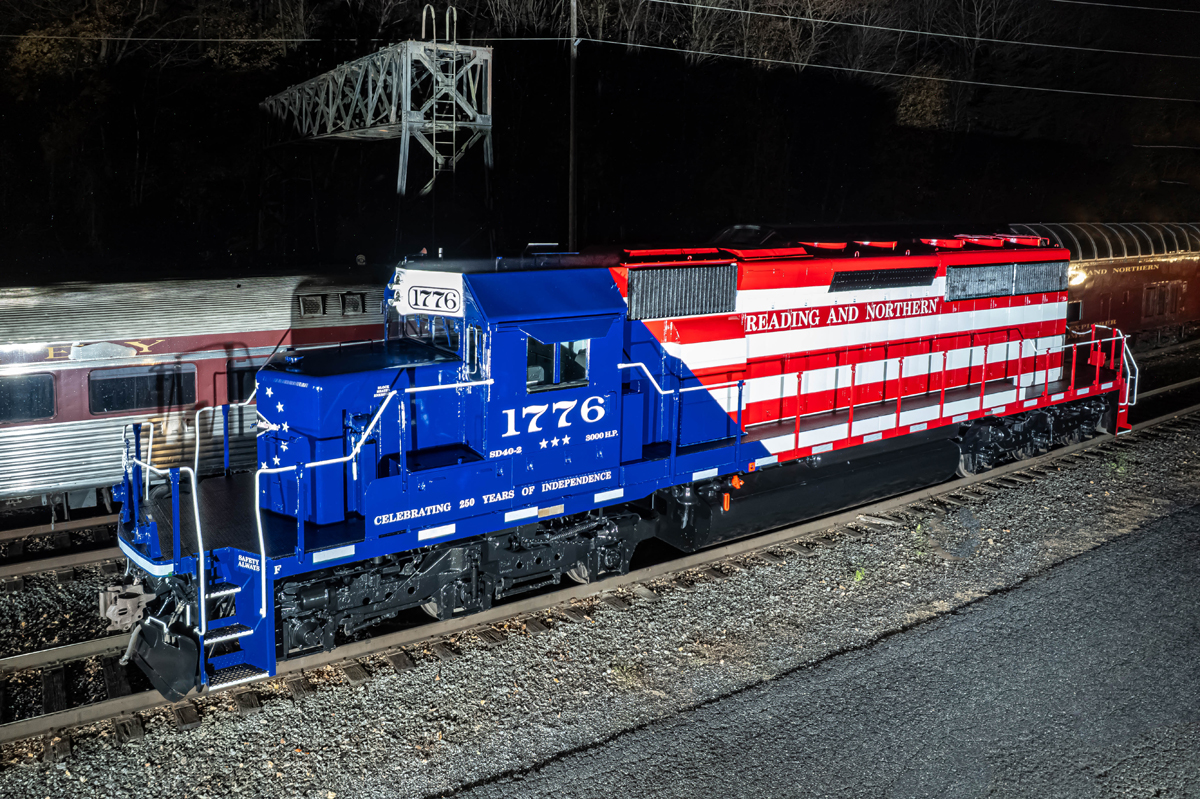
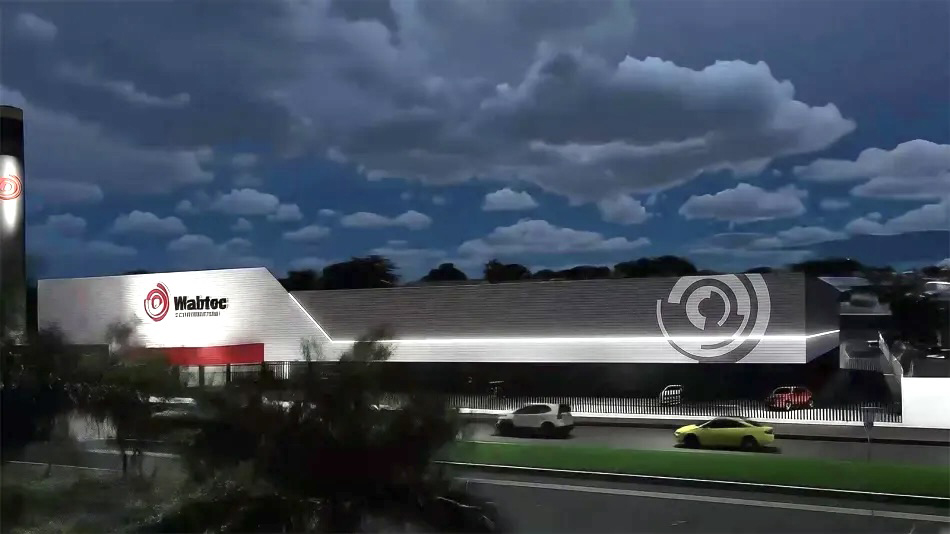




When the railroads looked at electrification some 40 years ago the final hang up was sourcing electricity. The utilities would only provide it on an interruptible basis (when the grid gets overloaded the utilities start cutting off industrial customers). Given the new requirements for AI computing, electric cars and everything else, electricity supply is going to have to increase by some 4 %/year (as opposed to 0.5 %/year for the last decade). The only possible source is new fossil fuel natural gas plants. There’s also the problem of upgrading the grid (new transformers have a lead time of 1 to 2 years for delivery). And getting all the legal permits required when the eco’s are blocking all new energy supplies.
The “expert” is not accurate about electric locomotives hauling heavy freight. The Milwaukee Road hauled it across Montana including the steep grade out of Avery, Idaho using Little Joe electric locomotives for years. Certainly the stretch from the ports to inland has the traffic density to make electric locomotives pay.
As for PTC=PSR, that is not so. That is greedy, tax subsidized, hedge funds that drive PSR, not PTC. PTC provides the means to make railroads better, but it takes a determination to do something other than “We have done it that way for 150 years.”
When I worked for a railroad over 50 years ago, I was told the UP was still using straight pins instead of staples to hold pages together!
As for using hydrogen, if it is derived from solar or wind, both of these means have times when the energy is not taken by the grid. Why not using to make hydrogen which can be stored?
Gentlemen, time marches on. Seems like technologies have a 100 -150 year lifespan. We had steam, then the diesel/gas era and now we are moving into the next phase. The internal combustion engine will be an antique on the rails and roads in the next 25 years. Of course there will be issues in the early years and the transition will make for some winners and losers, but ultimately, diesel will be relegated to the museums. Still skeptical–look how many hybrid and plug in electric vehicles are out there now compared to just 20 years ago when we only had electric golf carts. One other thing, stringing cat, given battery technology, no longer has to involve the entire route. Rather it can be done strategically so locos can recharge on the fly (sort of like track pans for water). This is coming whether we want to believe it or not.
Put the lines up and dust off what’s left of the ‘ol Big Joes.
And PRR’s E44s.
Typical California mathematics: Add 2 + 2 and get an answer of 44. No wonder they have a state budget deficit of 74 billion dollars. Is it any wonder that the smart people are leaving California in droves?
I wonder if anyone calculates how much “non-zero emission” is required (battery charging, etc) to keep the zero E. engines running? Also how much a train with T4 diesel power, can cut emissions from whatever amount of trucks it would take to move the same load???
Electrfication with catenary gets you more than straight replacement.
It gets you higher HP/ton on the cheap which brings higher average speed and all the savings that go with it. (Not higher MAS. Higher average)
https://blerfblog.blogspot.com/2023/04/i-built-train-performance-calculator.html?m=1
Honestly the California Air Resources Board should understand that diesel locomotives running on bio fuels and natural gas can help the environment too in addition to hydrogen and battery powered locomotives
Actually, the biggest environmental destruction and the most air pollution comes from WAR. Since this senile crook Biden has taken office in the White House, two major wars have broken out with no end in sight.
These two wars create infinitely more air pollution and infinitely more carbon emissions than do diesel locomotives in California.
My day wouldn’t be complete without an ignorant rant from Sir Charles the Greatest Railroad Know-it-All, who can’t figure out his messiah is a 34 Time Convicted Felon, Convicted Rapist, Multiple times Bankrupted, Multiple Casinos Bankrupted (how do you bankrupt a casino, you steal and lie), on and on ……
Really Mark. Really.
(1) Trump isn’t my messiah and you have no grounds for saying so. Jesus is my messiah, not any sleazy politician. I don’t care for Trump. I voted for DeSantis in the most recent Republican presidential primary (2024), Ted Cruz in a previous primary, don’t remember if that was 2016 or 2020.
(2) Trump was convicted of one misdeamor whose statute of limitations had expired, turned into 34 felonies by a Stalinist justice system.
(3) Donald Trump has never gone BK. He led some companies that went BK. As did most about every railroad, car company, and airline at one time or another.
(4) Trump has never been indicted for rape let alone convicted. For you to say so is just a plain lie which makes you unfir to comment on these pages
(5) What in my post (above) do you disagree with or think ignorant? Do you think that wars don’t pollute.
Frankly Mark if anyone on this forum comes up with ignorant rants, werll, maybe it’s you. Falsely stating that an American citizen is a convicted rapist should disqualify you from commenting on these pages.
Charles, I like the way you think; https://www.lewrockwell.com/
Well Charles where is your proof that President Biden is a crook or senile? For someone who doesn’t care for him you certainly do take offense and come to the rescue of the Orange One whenever anyone points out his flaws, of which there are many. He’s been convicted by a jury of 34 felony’s, Biden 0. He and you obviously believe that when a jury or 12 finds someone guilty it must be that the justice system is suddenly corrupt or rigged. And I’m guessing you feel the same way about our election system since Trump lost. I know he does as he’s pushed that lie from the day he lost. Oh and Trump has also been indicted for election interference and I personally hope he’s convicted. And as far as mental capacity Trump can’t string two words together that make any sense. I mean really Charles have you ever listened to the man give a speech? You’ll really have to admit it’s almost comical. Biden definitely isn’t perfect and I definitely wish we had more of a choice for who will be the next President of our country. But unfortunately we don’t. And between the two I’ll stick with the old man rather than the orange narcissist. So as you found it necessary to give you opinion of Biden I felt I’d let you know my opinion of the FORMER president.
So carb is basing their argument on possibilities or projections. That’s the problem with our so called modern society based solely on some trumped up computer program some idiot wrote at the behest of his idiot boss who told him how and what to write and what outcome they ultimately wanted and people actually believe this s%-t because the program says so……. We’re screwed.
Well, CARB calculates a $32 billion savings from this move. So they can use this money to fund the purchase of new locos for both the Class 1s and the short lines in the state. And, being an honest and aboveboard organization, they would also guarantee to fully fund the railroads for any unanticipated equipment or operating costs (chuckle).
Even those living here in California are getting sick of CARB, and state government in general. As much as I dislike the Feds interfering in state government, this is one case where CARB needs to be put in it’s place and have their rule denied…emphatically!
“$32 billion worth of health savings to Californians by preventing 3,200 premature deaths and 1,500 emergency room visits and hospitalizations, as well as decrease cancer risk . . . by up to 90%”
Whenever I see such claims I have to question how they come up with the figures. Looks like wildfires from poor forestry practices are the biggest culprit with over 50,000 premature deaths costing over $400 billion health dollars.
It’s far fewer steps to get from current locomotives to an 8,000 HP six axle AC than any of the other alternatives.
In fact, it should be practical to replace the diesel/alternator set with a transformer in existing locomotives.
All the parts needed are proven technology.
California has something north of 5000 miles of track. Stringing cat would cost in the trillions. Just the main lines will be in the billions when including feeders and substations. The unfunded mandate of PTC eventually got us PSR. What will this mandate cost us? Remember, it’s about 150 miles from Yuma to Tijuana (and the drug cartels can be reasoned with compared to CARB).
Catenary would cost about $4M per line mile (Amtrak NEC extension inflated to 2024)
California probably has 1000-2000 miles of heavy mainline.
That’s $8B.
Let the fuel cells/battery/hybrids handle the rest.
A billion here, a billion there and pretty soon we’re talking about real money.
The test says they figured 130 cars @ 19 tons each….How about 130 loaded 110 ton coal hoppers?
How about a 200 car train instead of 130…I’m not sure what trains they were viewing, but a 130 doesn’t cut it…unless that’s 130 double stack units of 5 cars each, that would make more sense.
One other thing: None of CARB’S “alternatives” is actually “zero emission”.
The electricity needed to recharge battery-run locos has to be generated. So does the MASSIVE amount of electricity needed to separate the hydrogen from water, and to filter said water from as many impurities as possible first.
Here in California, that would be by – you guessed it – fossil fuel power plants. Solar and wind simply do have have the capacity or reliability to do this job.
And one can forget nuclear power plants here in this state. the Diablo Canyon Nuclear Plant is the only one left, and the environmental whackos will refuse to allow others to be built here, and their influence amongst the legislature is far greater than the influence of the people or of sanity.
A “round trip” from water to hydrogen to water again using electrolysis and fuel cells is about the same efficiency as getting electricity from a diesel engine.
“CARB’s locomotive analysis – released last month and conducted all on paper, rather than on rails –”
Says it all. CARB isn’t interested in real world solutions – only its “climate change” induced political agenda. And they wonder why people laugh at them….
How would California deal the steam locomotives in the old days? Just a question.
Ed Burns
Retired Class 1 from Mpls, MN
I’m glad you asked. I would have, and still do, find the concept of safe(r) “liquid fluoride thorium reactors”, (molton salt), a good possibility, even today, to help save those old steam engines.
https://en.wikipedia.org/wiki/Thorium-based_nuclear_power
Coal liquefaction is another interesting idea. https://en.wikipedia.org/wiki/Coal_liquefaction
How CARB could with a straight face say zero emission locomotives would work without actually putting them to the test is beyond me. Maybe they work once or twice and then fail. Maybe they work but cause track damage. Maybe they require extensive time in the repair shops. Maybe they are not cost efficient. Maybe they are not all weather.
The same way Congresscritters said, with a straight face, that PTC was a “proven technology” and demanded widespread installation. They believe what they want to believe or, at the very least, tick the box the most vocal demand regardless of reality.
Pure hogwash. Figures don’t lie, but liars figure. (And the bigger the figure, the bigger the lie!)
CARB couldn’t find its own arse with both hands and a flashlight. Don’ believe anyhing that they claim.